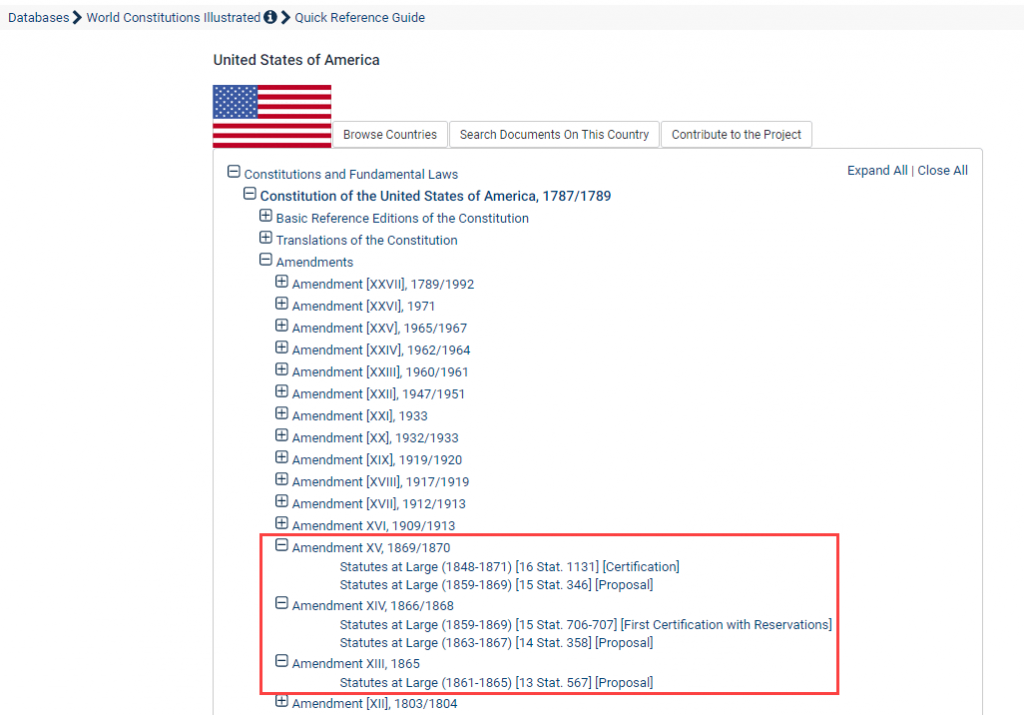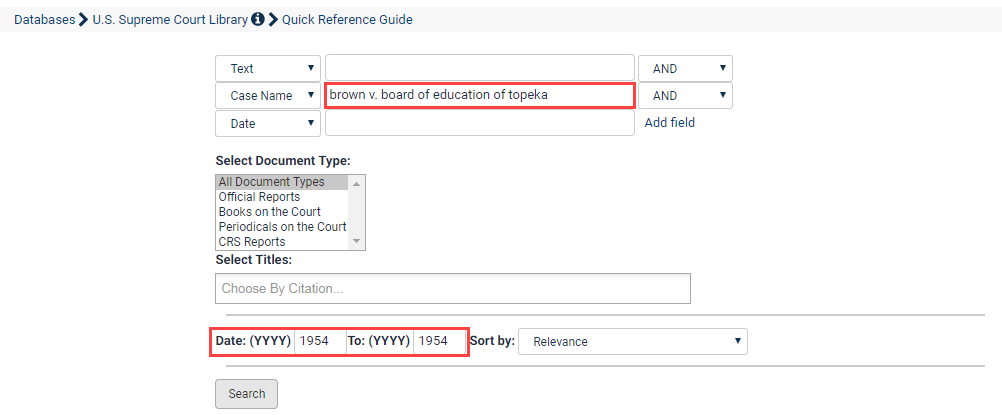May 17, 2019 marks 65 years since the ruling of Brown v. Board of Education of Topeka, the landmark decision in which the Supreme Court determined racial segregation in schools to be unconstitutional. Continue reading to discover more about the case, and then check out how Brown v. Board fits into the evolution of U.S. education.
Before We Get Started:
Don’t miss out! Make sure you have the databases we’ll be mentioning in this post. Follow the links below to start a trial today.
- Slavery in America and the World: History, Culture & Law – FREE with Registration!
- World Constitutions Illustrated: Contemporary & Historical Documents and Resources
- U.S. Supreme Court Library
- Law Journal Library
- Session Laws Library
- History of Supreme Court Nominations
Where Did We Come From, Where Do We Go?
“We hold these truths to be self-evident, that all men are created equal, that they are endowed by their Creator with certain unalienable Rights, that among these are Life, Liberty and the pursuit of Happiness.”
“All men are created equal” may be one of the most well-known phrases in the English language, yet it has taken centuries to fully establish the meaning of the expression in United States law. Since the end to slavery with the ratification of the Thirteenth Amendment (1865), racial inequality has continued to be a pervasive issue in American culture. In 1868 and 1870, however, the Fourteenth and Fifteenth Amendments initiated progress toward racial equality by establishing rights for newly freed slaves.
Discover more about these amendments from the sources themselves by navigating to HeinOnline’s World Constitutions Illustrated database. Select “United States of America” from the blue drop-down box at the top of the country list. Selecting “Constitutions and Fundamental Laws” and then “Constitution of the United States of America” will direct the user to a list of amendments to the U.S. Constitution. Selecting any amendment will bring up a list of the places in which the amendment can be found in HeinOnline.

Despite these progressive amendments, the African-American community continued to suffer legally-sanctioned discriminatory treatment throughout the 19th and 20th centuries. In an attempt to regulate the behavior of freed slaves after the Civil War, states instituted laws which became known as the Black Codes. In 1865, Mississippi instituted the first Black Code, “An Act to confer Civil Rights on Freedmen,” placing requirements on the land which African-Americans could rent as well as requiring them to submit annual proof of employment. The act also mandated a fine for any white Americans who acted on equal terms or maintained relationships with blacks. Several states soon followed Mississippi’s model and passed their own Black Codes in the following years. Users can find the Black Codes of Mississippi and other states in HeinOnline’s free database, Slavery in America and the World: History, Culture & Law.
Essentially replacements for slave codes, Black Codes paved the way for Jim Crow Laws, state and local laws which enforced racial segregation in public facilities, transportation, and schools. Though unjust, these laws were not challenged in court until the case of Plessy v. Ferguson in 1892. The case concerned Homer Plessy, a black man, who was arrested when he refused to relinquish his seat to a white man on a New Orleans train. Arguing that Louisiana law violated the Fourteenth Amendment, Plessy’s case reached the Supreme Court in 1896. By a majority vote, however, the Supreme Court ruled in favor of state-mandated segregation, provided it be “separate but equal.”
The Brown v. Board of Education ruling eventually overturned that of Plessy v. Ferguson in 1954. Thename of the case was actually given to five different cases presented to the U.S. Supreme Court regarding racial segregation in public schools: Brown v. Board of Education of Topeka, Briggs v. Elliot, Davis v. Board of Education of Prince Edward County (VA), Bolling v. Sharpe, and Gebhart v. Belton. Brown v. Board of Education itself originated with a 1951 lawsuit from Oliver Brown, an African-American man from Topeka, Kansas, who contested the fact that his daughter had been rejected from Topeka’s all-white public schools. Brown argued that the schools intended for black children were not equal to those for whites, violating the “equal protection clause” of the Fourteenth Amendment.
When all five cases were presented to the Supreme Court under the one name, Thurgood Marshall (later the first black Supreme Court justice) represented the plaintiffs. After much deliberation, the Supreme Court voted unanimously in favor of the Brown family and other plaintiffs, stating that “in the field of public education the doctrine of ‘separate but equal’ has no place,” and that segregated schools are “inherently unequal.” The ruling changed the course of U.S. education and history with the decision that “separate but equal” is unconstitutional in the realm of public education.
The full case of Brown v. Board of Education can be found in HeinOnline’s U.S. Supreme Court Library database, which contains comprehensive coverage of the U.S. Reports (the official source of United States Supreme Court case law). After entering the database, users can start by selecting the Official Reports browse option. To search for a specific case, use the Advanced Search link, located beneath the main search bar. Using the case name field, type “Brown v. Board of Education of Topeka.” To filter the search even further, type “1954” in both date range boxes. Clicking the search button will then bring up one result.

Even with the progress made by the Brown ruling, current research suggests that the desegregation of schools has not been completely accomplished. While we no longer see state-mandated “white schools” and “black schools,” a recent report released by UCLA and Penn State seems to claim that U.S. schools have remained unintentionally segregated since the 1954 decision.
According to the research, white students attend schools much less white than those of the 1950s and 60s, but black and Latino students seem to end up in schools predominantly attended by people of color. This could be caused by a variety of factors, but perhaps most significant is the deep-seated segregation in both urban and suburban neighborhoods. Regardless of the cause, one clear result of this segregation is the widening educational gap between people of color and their white peers.
On the 65th anniversary of Brown v. Board of Education, we recognize that the United States still has a long way to go in order to make truly integrated education a reality. As the UCLA/Penn State report suggests, we can continue to move in the right direction by training teachers to work with diverse student populations, increasing diversity in teachers and other school faculty themselves, and understanding diversity as an overall social issue, rather than just an educational one.
Be a part of the change. Educate yourself and connect with HeinOnline on our social media platforms: Facebook, Twitter, Instagram, and YouTube.



